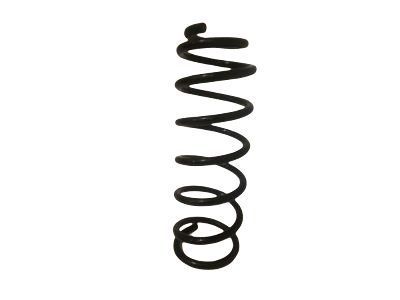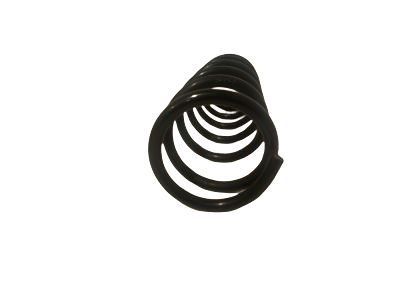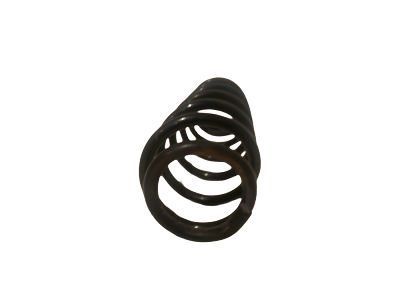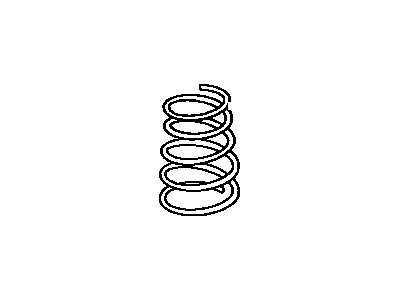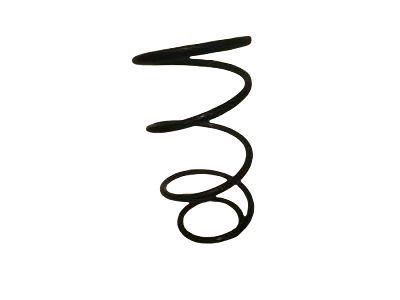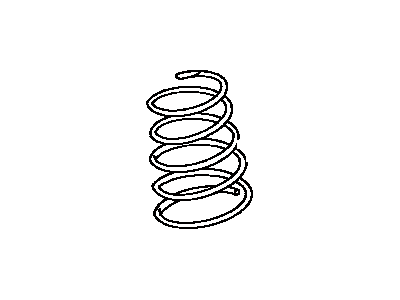

My Garage
My Account
Cart
Genuine Toyota Matrix Coil Springs
Strut Spring- Select Vehicle by Model
- Select Vehicle by VIN
Select Vehicle by Model
orMake
Model
Year
Select Vehicle by VIN
For the most accurate results, select vehicle by your VIN (Vehicle Identification Number).
30 Coil Springs found
Toyota Matrix Rear Coil Spring
Part Number: 48231-AB010$75.98 MSRP: $107.10You Save: $31.12 (30%)Ships in 1-3 Business DaysToyota Matrix Front Coil Spring
Part Number: 48131-AB060$72.09 MSRP: $101.62You Save: $29.53 (30%)Ships in 1-3 Business DaysToyota Matrix Front Coil Spring
Part Number: 48135-02060$90.55 MSRP: $127.64You Save: $37.09 (30%)Ships in 1-3 Business DaysToyota Matrix Front Coil Spring
Part Number: 48131-02D80$72.32 MSRP: $101.94You Save: $29.62 (30%)Ships in 1-3 Business DaysToyota Matrix Front Coil Spring
Part Number: 48131-AB050$69.84 MSRP: $98.46You Save: $28.62 (30%)Ships in 1-3 Business DaysToyota Matrix Rear Coil Spring
Part Number: 48231-02740$76.10 MSRP: $107.27You Save: $31.17 (30%)Ships in 1-3 Business DaysToyota Matrix Front Coil Spring
Part Number: 48131-02D40$59.59 MSRP: $83.99You Save: $24.40 (30%)Ships in 1-3 Business DaysToyota Matrix Rear Coil Spring
Part Number: 48231-02730$70.55 MSRP: $99.45You Save: $28.90 (30%)Ships in 1-3 Business DaysToyota Matrix Front Coil Spring
Part Number: 48131-AB020$71.38 MSRP: $100.62You Save: $29.24 (30%)Ships in 1-3 Business DaysToyota Matrix Rear Coil Spring
Part Number: 48231-02700$78.93 MSRP: $111.27You Save: $32.34 (30%)Ships in 1-3 Business DaysToyota Matrix Front Coil Spring
Part Number: 48131-02D90$75.46 MSRP: $106.37You Save: $30.91 (30%)Ships in 1-3 Business DaysToyota Matrix Rear Coil Spring
Part Number: 48231-02440$97.02 MSRP: $136.76You Save: $39.74 (30%)Ships in 1-3 Business DaysToyota Matrix Front Coil Spring
Part Number: 48131-02D10$61.11 MSRP: $86.15You Save: $25.04 (30%)Ships in 1-3 Business DaysToyota Matrix Front Coil Spring
Part Number: 48131-AB090$69.18 MSRP: $97.52You Save: $28.34 (30%)Ships in 1-3 Business DaysToyota Matrix Rear Coil Spring
Part Number: 48231-02430$82.71 MSRP: $116.59You Save: $33.88 (30%)Ships in 1-3 Business DaysToyota Matrix Front Coil Spring
Part Number: 48131-AB040$83.06 MSRP: $117.09You Save: $34.03 (30%)Ships in 1-3 Business DaysToyota Matrix Spring, Coil, Front
Part Number: 48131-0Z070$72.09 MSRP: $101.62You Save: $29.53 (30%)
| Page 1 of 2 |Next >
1-20 of 30 Results
Toyota Matrix Coil Springs
If you are in demand for superior quality and affordable OEM Toyota Matrix Coil Springs, then shop with us! We own a wide range of the reduced-priced genuine Toyota Matrix Coil Springs. You can purchase in confidence as all parts come with a manufacturer's warranty. Any issues with our products? No need to worry as we have a hassle-free return policy to guide you every step of the way.
Toyota Matrix Coil Springs Parts Questions & Experts Answers
- Q: What steps should be followed for disassembling and reassembling Coil Springs and Shock Absorber on Toyota Matrix?A:Look under the hood for any leakages, loss of damping ability or any form of physical damage on the struts or coil springs before a job is done because these units are non-serviceable and have to be replaced once there is a problem. While strut assemblies with springs commonly are used, these parts may be ordered on an exchange basis, which is convenient. So before getting into the process of dismantling the vehicle, get to know the prices of Body parts and if they are easily available. To disassemble, the Strut assembly or rear shock absorber/coil spring assembly is removed and then mounted on a vise-the jaws of which are covered with wood or rags not to pinch the absorber/spring. After using a tool manufacturer's instruction place a spring compressor over the upper spring seat and get a confirmation when the pressure from the spring is relieved by jiggling the spring. Locate the position of the upper and lower spring seat and suspension support bracket, and then remove the damper shaft nut, and lock it if needed. Take out the nut and suspension support, it is necessary that you turn the bearing and observe its condition and check the rubber part of the support for signs of wearing. Raise the spring seat together with the upper insulator off the shaft of the damper and inspect the rubber spring seat for signs of wear. It is advisable to have the ends of the compressed spring facing your body's direction; then ease it off the assembly and place it aside securely. Next, slide the rubber bumper off the damper shaft and look at the condition of the lower insulator to see if it needs to be replaced. For reassembly, if replacing the lower insulator, insert it on the location and fitting, extend the damper rod to placing the rubber bumper. Position the coil spring on the lower insulator with the end slot of it devoted to the recessed part. Next screw in the upper insulator followed by the spring seat by ensuring that the flats on the damper shaft fit into the corresponding ones in the spring seat. Install the dust seal and suspension support so that their marks are the same when aligned and bolt the suspension support to the frame using a new nut and tighten. Last, either reinstall the strut assembly/ or the rear shock absorber and coil spring in the same manner as described above.
